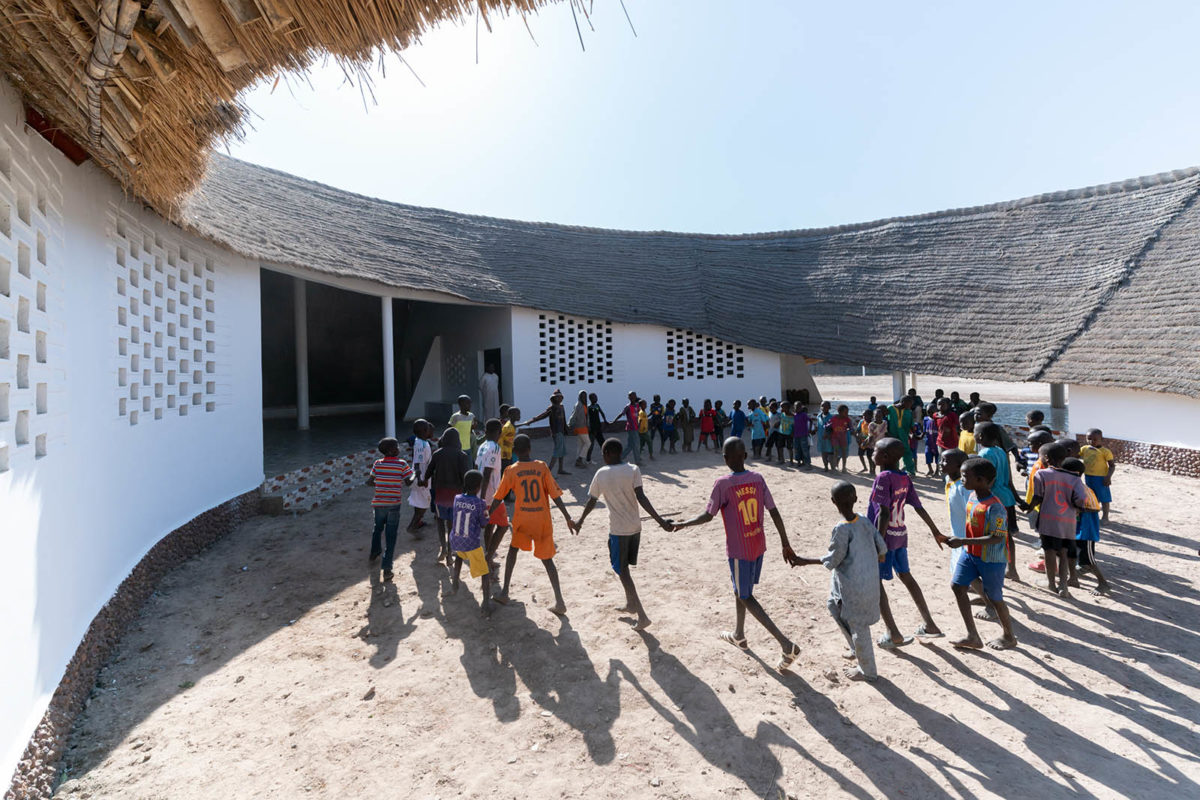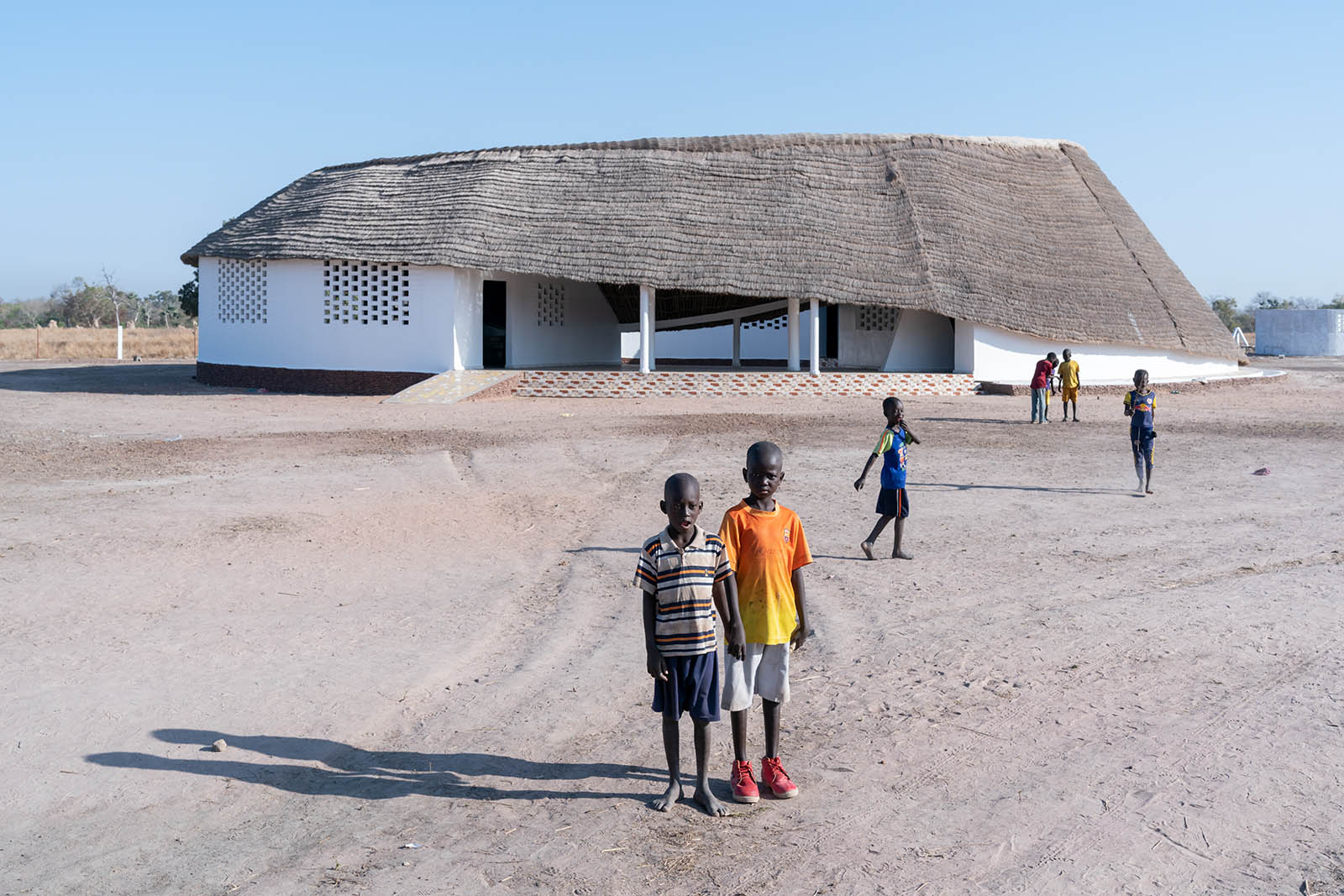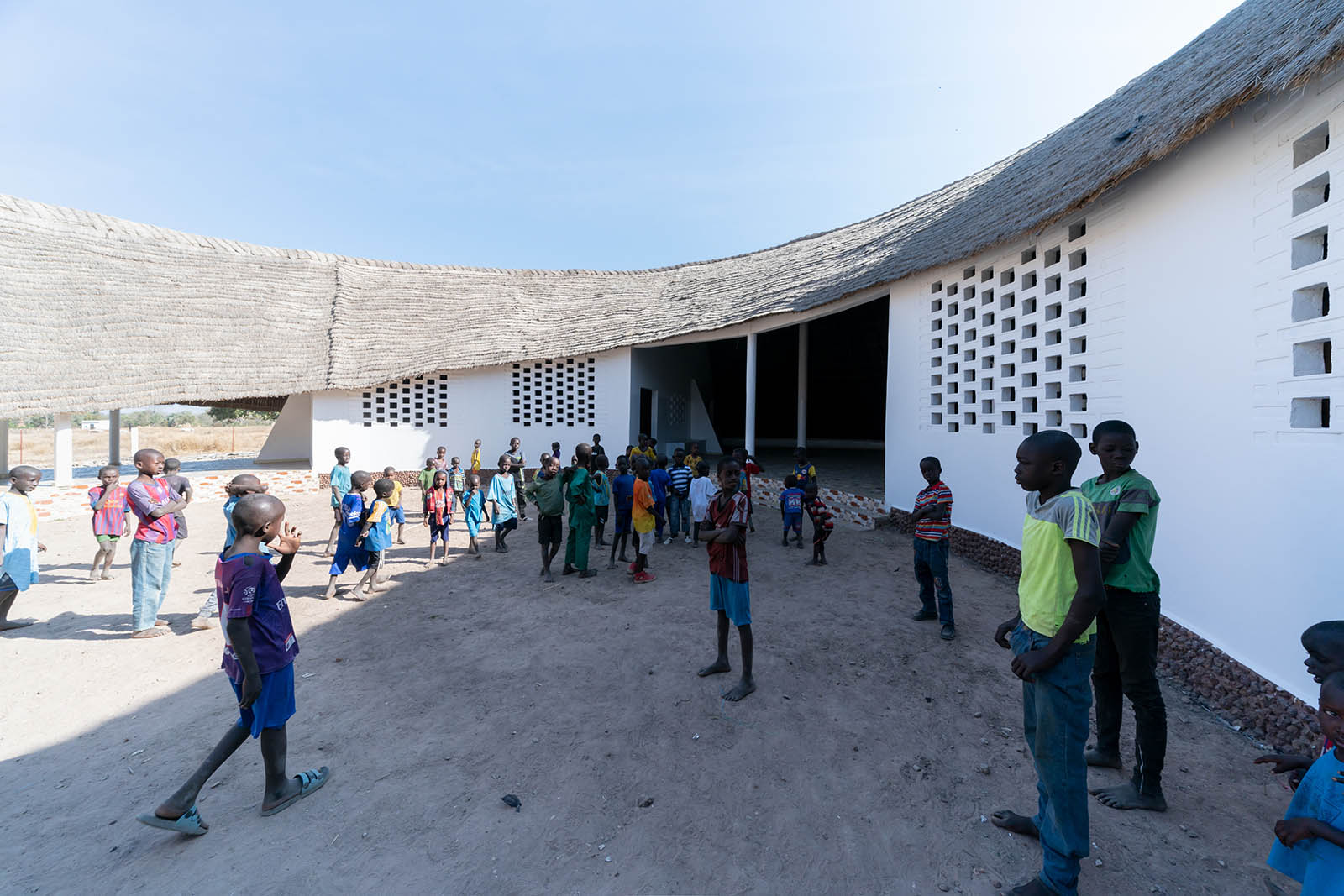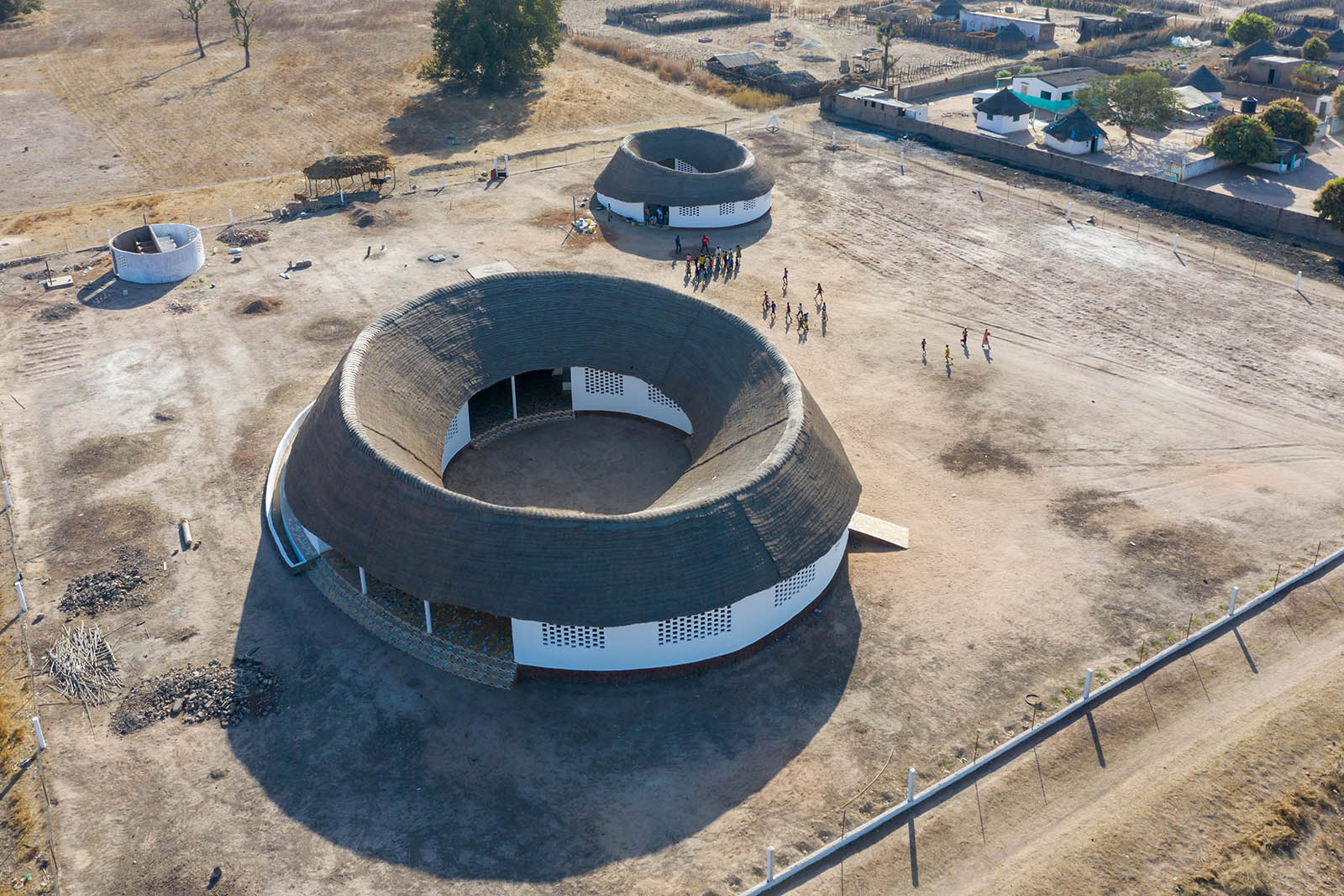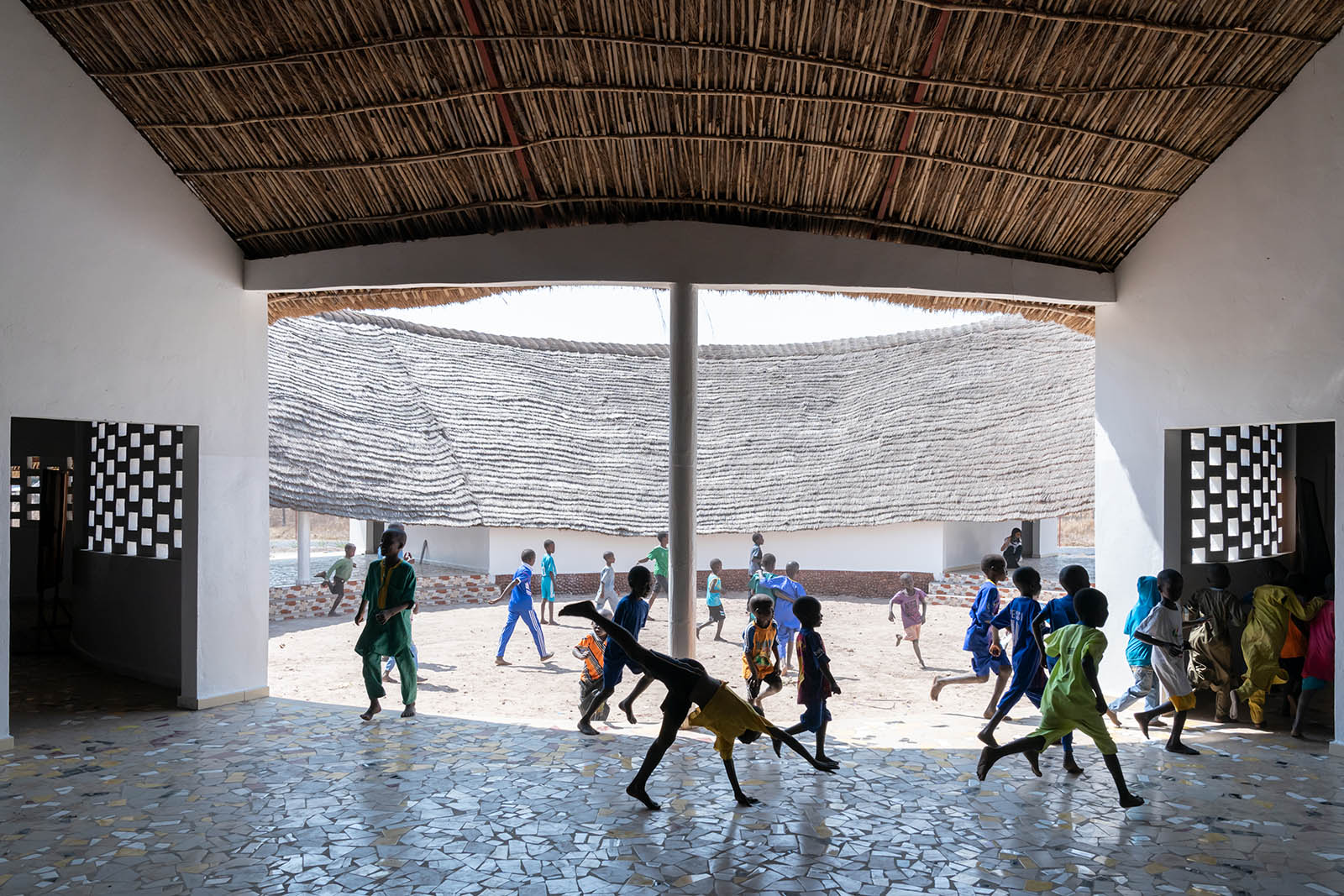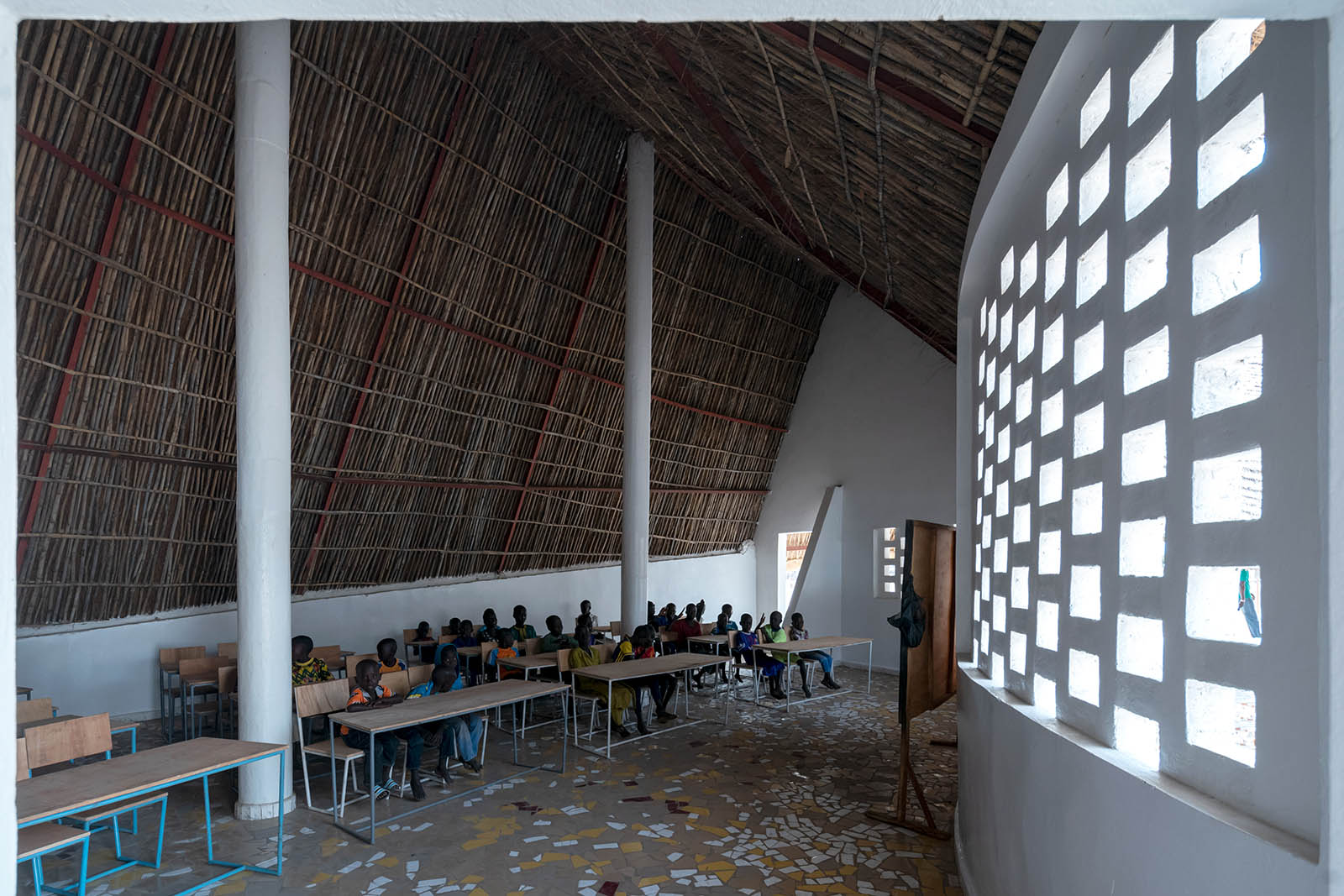The Harvard Graduate School of Design’s Toshiko Mori has designed a new elementary school in the Senegalese village of Fass, activating materials and form in ways similar to her award-winning Thread project and pioneering an educational facility that binds local villages and redefines learning for children.
Revealed on February 2, the Fass School and Teachers’ Residence is the first in the region to teach children how to read and write in their native language, Pulaar, as well as in French. It will serve up to 300 students, ages 5 through ten. The school’s opening capstones seven years of negotiations with local Muslim leaders as well as Nicholas Fox Weber, the executive director of the Josef and Anni Albers Foundation and founder and president of Le Korsa, a nonprofit dedicated to developing medical centers and schools in Senegal.
“One of the things that’s made Toshiko so great for this project is that she sees architecture as a big vision—its impact on humanity—not just building buildings,” Fox Weber says in recent Architectural Record coverage of the project.
As Architectural Record observes, Mori designed the Fass School as an oval building, with an inner courtyard for the school that references an ancient compound in a nearby village. The project engages workers with the traditional skills and materials to build it; walls are of mud-brick, supported by small steel members and bamboo, and painted white to deflect the sun’s heat. The school’s roof is composed of bamboo and grass, with the outer ring draping the exterior walls and the inner dipping to partially shade the courtyard. Inside, six interior walls create three classrooms and three indoor-outdoor spaces.
Mori notes that the Fass School design was inspired by Josef and Anni Albers, given Josef Albers’ time as a teacher. She imagines the school as a place for members of various local tribes to come together in a comfortable, inviting space, where learning and education might take on new meaning for students and the community.
“We wanted to de-institutionalize school and not make it imposing, scary, or foreign,” Mori tells Architectural Record. She adds that Quranic studies typically take place in concrete-block buildings with corrugated metal roofs—so when it’s hot, the buildings are stifling, and when it rains, the sound drowns out instruction. The materials and form of her Fass School aim to transcend these and other barriers to learning.
At the GSD, Mori is the Robert P. Hubbard Professor in the Practice of Architecture and was Chair of the Department of Architecture from 2002 to 2008. She is principal of Toshiko Mori Architect, which she established in 1981 in New York City. Mori taught at the Cooper Union School of Architecture from 1983 until 1995, when she joined the GSD faculty with tenure. She has been a visiting faculty member at Columbia University and Yale University, where she was the Eero Saarinen Visiting Professor in 1992. Mori has taught courses on the tectonics of textiles, materials, and fabrication methods in architecture; structural innovations; and the role of architects as agents of change in a global context. Her recent studio classes have partnered with international non-profits to develop prototypes for community centers and performing arts centers.
Read more about Mori’s Fass School project via Architectural Record.
Photography by Le Korsa and Iwan Baan, courtesy the Josef and Anni Albers Foundation.
